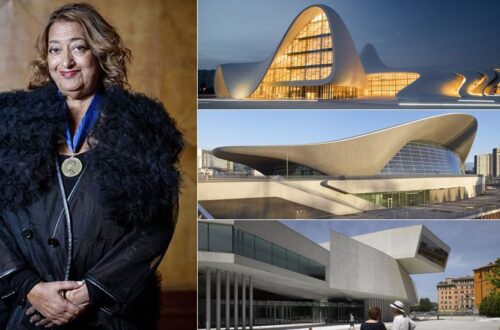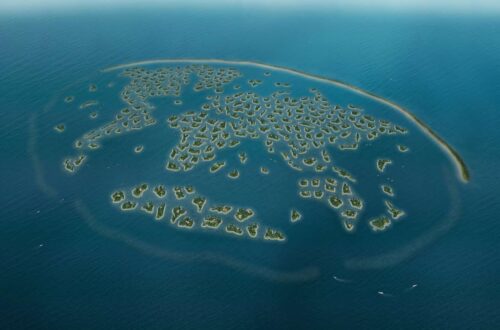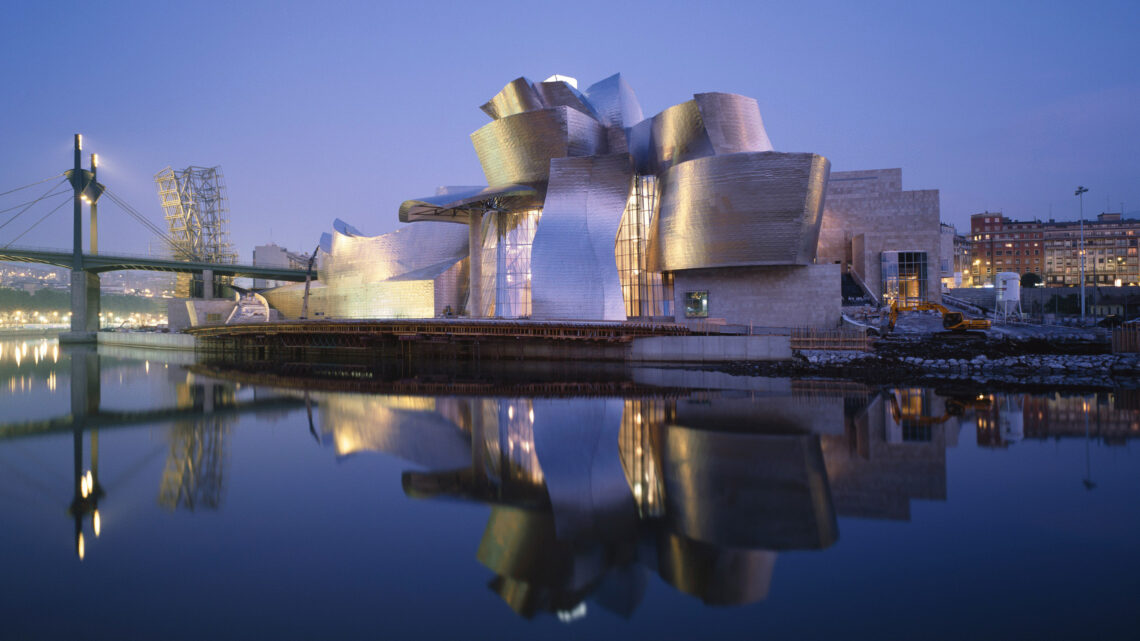
The Bilbao Effect – How Frank Gehry Transformed A City’s Economy Through Architectural Design
The Bilbao Effect is a term coined by economists to describe the huge economic and social impact that the Guggenheim Museum had, being one of the world’s most visited museums that was built in 1997. What makes this architecture structure striking is the influence it had on its surrounding area. Prior to its completion, Bilbao was a city far north of Spain, suffering from a high degree of unemployment and poverty. However, after building the $100 Million museum, it reignited the city’s economy and started a global trend for landmark museums, and things changed drastically for this Spanish town.
Read on to discover the wonderful changes Frank Gehry forged with the completion of this architecture and how it is inspiring other cities around the world.
The Guggenheim Museum, Bilbao – What is it?

Recognised as an architectural masterpiece, the Guggenheim Museum in Bilbao was crafted by the renowned Frank Gehry, celebrated as one of the most preeminent architects of our era. Distinguished by its exceptional design, the building serves as an artistic marvel, setting it apart from all other structures in the city. It is a piece of art that resembles a ship but also looks like it flips its tail like a jumping fish. A symbol of pride for Bilbao, the museum entices countless tourists each year who are captivated by its allure and innovative construction. This remarkable edifice has emerged as an iconic landmark, drawing visitors from across the globe.
Where did it all begin?
The museum was conceived in the early 1990s, by its director, Juan Ignacio Vidarte, who said that the building was meant to be a “transformational project.” It soon became a catalyst for a wider plan to turn around an industrial city in decline and afflicted by Basque separatist terrorism. It was to be “a driver of economic renewal”, and an “agent of economic development” that would appeal to a “universal audience”, create a “positive image” and “reinforce self-esteem”. All of which it pretty much did.
Gehry, who is the face of the Bilbao Effect, beat two other architects in the competition to design the building. He was predominantly known for expressive works in his adopted home city of Los Angeles, where he won a competition organised in 1992 to design a museum for a site in a dilapidated port area. This gained him recognition, as The Guggenheim Foundation’s director, Thomas Krens, recognised that such a project required a landmark building. Soon after, Gehry’s design was selected over proposals by Arata Isozaki & Associates, as well as Coop Himmelblau.
“He [Gehry] was chosen for the strength of his vision,” said Krens, who also claimed in a television interview that the building “is going to be precedent-setting for what museums of the 21st century can be.”
The design and construction process
The construction of the Guggenheim Museum Bilbao took place from October 1993 to October 1997. The museum’s location was carefully selected on a former wharf along the Nervión River, which had previously been used for port and industrial purposes. This choice symbolised the revitalisation of the riverbanks, transforming them into spaces dedicated to culture and recreation of the city.
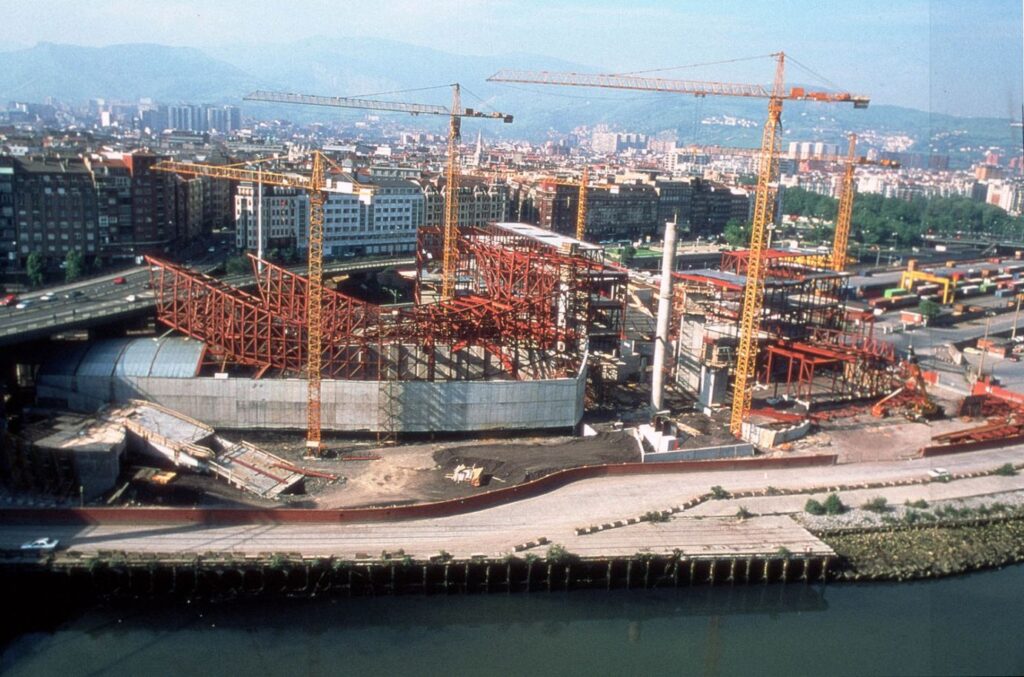
However, the dynamic forms that define the exterior of the Guggenheim Museum Bilbao were achievable only thanks to computer modelling software developed by the French aerospace company, Dassault Aviation. Using the 3D design software called CATIA, the architect’s office was able to visualise surfaces with multiple compound curves and, most importantly, demonstrate to contractors how these expressive forms could be built. Gehry had proudly recounted multiple times how the building was successfully completed on time and on budget (roughly $89 million). He often put this feat down to the computer software’s ability to accurately model all the necessary components, and to faithfully translate his concept to the structure and to help construction.
The main material and outer skin of the building is titanium, which Gehry chose after seeing the behaviour and qualities of a titanium sample pinned outside his office. In the end, the approximately 33,000 extremely thin titanium sheets provided a rough and organic effect, adding to the material’s colour depending on the weather and light intensity. The other two materials used in the building are limestone and glass, which harmonise perfectly, achieving an architectural design with a great visual impact that has now become a real icon of the city throughout the world.
Why is the design so unique and iconic?
Located just on the edge of the city centre, in what had become a rundown docklands area, the museum’s design responds to the urban setting. It also brings forth the arch of the river to the north and the Salve Bridge to the east, enhancing the landscape in more ways than one.
The fluidity and vitality of the architecture was mainly inspired by Gehry’s fascination with the movement of fish. In an interview with journalist Charlie Rose in 1997, Gehry mentions, “I was interested in movement, and when a fish moves, it’s so beautiful; I started to make forms like that and was able to achieve that sense of movement, and I developed an architectural vocabulary.”

The museum’s design consists of a series of interconnected volumes, which are covered with orthogonal coated stone and some organic skin with a titanium skeleton. The museum’s galvanised steel framework is clad externally with limestone and glass, along with 33,000 paper-thin titanium panels mentioned prior, chosen for the way the metal reflects the natural light. The limestone and titanium materials are used in effort to try not to overshadow the city’s other buildings in terms of materials and height, which was a key focus of Gehry’s, who stated that he just meant for the museum “to be a part of the city.”
The ship-like profile visible from the river recalls the area’s industrial heritage, while from above, the building’s plan resembles a flower, with petals spreading out around a central atrium. Visitors enter the building through the atrium, which features large, glass curtain walls that connect the inside and outside. The light-filled space contains curved walkways, glass elevators and staircases connecting the three internal levels.
How it transformed the city’s economy
The result of such a majestic and beautiful structure of titanium and stone is a complete change in the landscape of Bilbao. It brings millions of tourists from all over the world and has made Bilbao one of Spain’s most captivating destinations for tourists and investors alike. The museum left a socio-economic impact that more than met its objective of transforming the city’s image, with calculations in 2017 suggesting that the museum generates around €400 million per year for the local economy.
Exhibition spaces totalling 11,000 square metres are provided across the museum’s 19 galleries. Ten of the rooms feature a standard orthogonal plan, while the others vary in shape, with several designed to house permanent works. The largest gallery measuring 30 metres wide and 130 metres long contains Richard Serra’s monumental steel sculpture, The Matter of Time.
During its initial three-year period, the Guggenheim museum witnessed an impressive influx of approximately 4 million tourists, resulting in a substantial economic impact of around €500 million. Notably, in 2003, international visitors surpassed local ones for the first time, accounting for 43% of the total visitor count. This surge in tourism proved highly beneficial to the region, as the revenue generated from visitor expenditures on accommodations, dining, shopping, and transportation amounted to an estimated €100 million in tax revenue, exceeding the building’s cost.
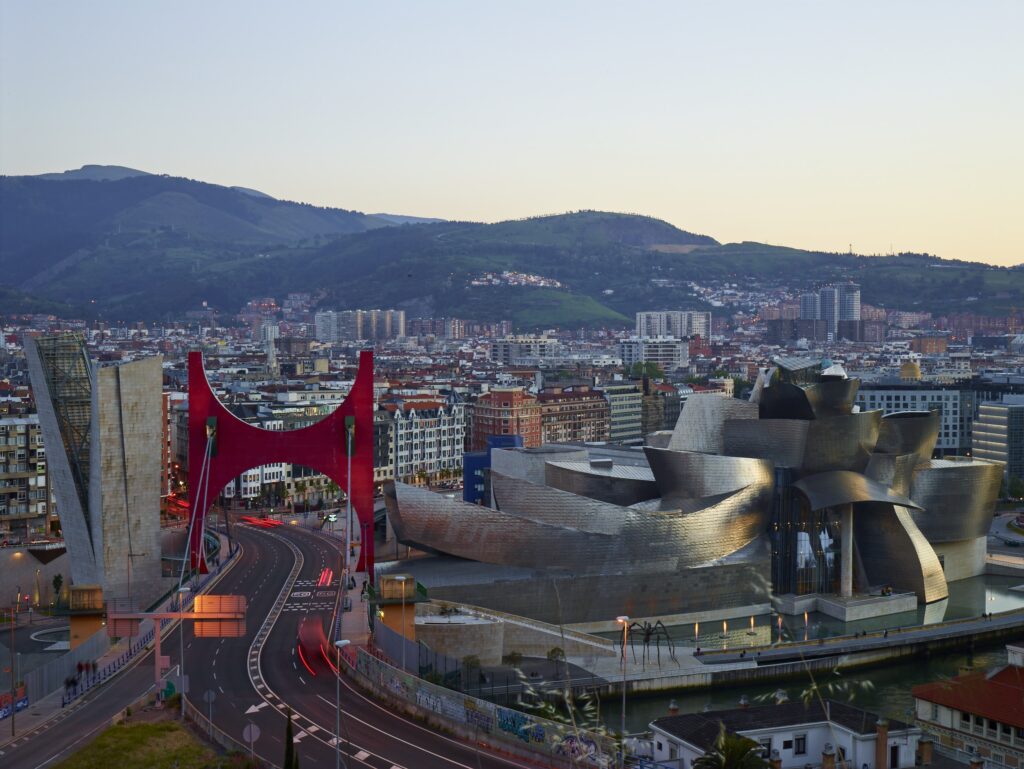
Moreover, the architectural marvel of the Guggenheim Bilbao has garnered attention in the entertainment realm, appearing in diverse films and videos. Notable examples include its prominent role in the 1999 James Bond film featuring Pierce Brosnan, Mariah Carey’s music video for the song “Sweetheart,” and even a South Indian film titled “Sivaji.” However, the significance of the museum extends beyond its allure as a tourist destination. It serves as a catalyst for Bilbao’s remarkable economic recovery from its most challenging times, playing a pivotal role in revitalising the city’s economy.
Despite its magnificence and brilliance, the “Bilbao Effect” is not the first of its kind. Sydney’s Opera House, Paris’ Pompidou Center and many other cities such as Frankfurt, Glasgow and Pittsburgh all used iconic architecture to improve their cities’ economy and status. Yet the reason it is called the “Bilbao Effect” and not the “Sydney Effect” or the “Paris Effect” is because of the stark contrast in the ambition to transform Bilbao. This city was a post-industrial wasteland that was built on dying shipbuilding and steel industries, which were impossible to revitalise for the 21st Century. Cities like Sydney, Paris and Frankfurt were already modern metropolitan cities with a flourishing artistic and architectural culture.
Other cities inspired by the Guggenheim Museum
Once the world saw what the Guggenheim Museum did to Bilbao’s economy, many architects worldwide took Gehry’s design and process as an example and inspiration for their own works. This soon started a global trend for landmark museums around the world. Below are some key examples of architectural structures inspired by the Guggenheim Museum Bilbao:

Centre Pompidou-Metz, France, designed by Shigeru Ban, 2010
The Architects themselves even claimed that the Bilbao Effect was a huge inspiration in their attempt to create a sculpture in a relatively unknown city to bring in international tourism.
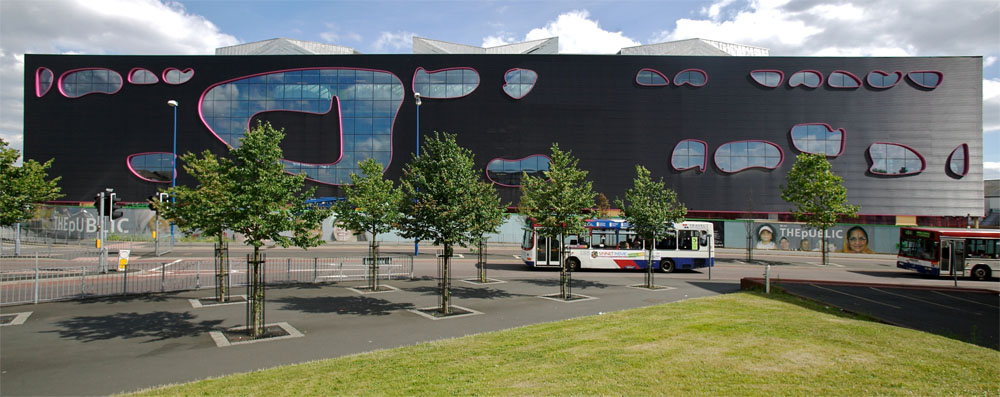
The Public, West Bromwich, designed by Will Alsop, 2008
A £72m public arts centre in West Bromwich brought in 1 million visitors within the first four years of its opening. It was described as a “Playground for Adults” that would host art, comedy, and even cinemas. It brought tourists from all over the country but shut down in 2013 before seeing it grow to its real potential.
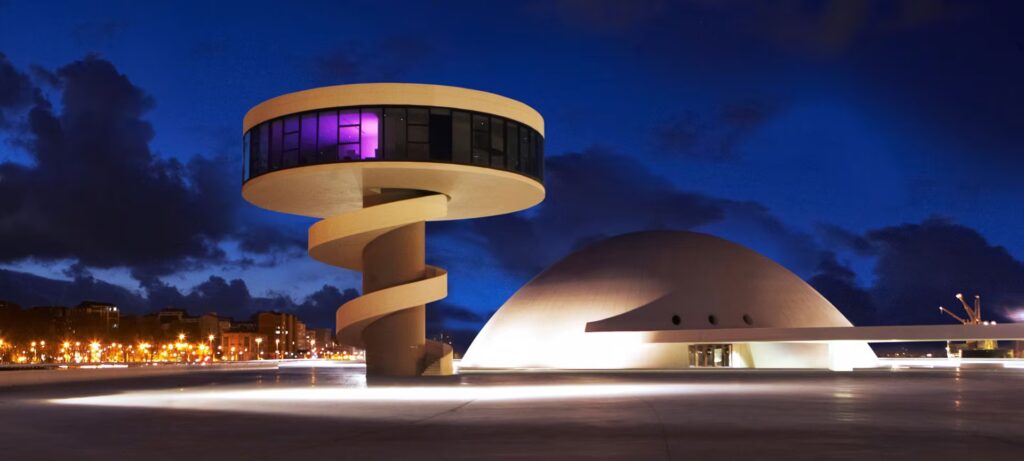
Centre Niemeyer, Avilés, Spain, designed by Oscar Niemeyer, 2011
A cultural centre that put the city of Avilés on the map after the famous Woody Allen visited it at its opening. Popular artists and stars such as Brad Pitt and Kevin Spacey saw the works and further increased publicity of the cultural complex.
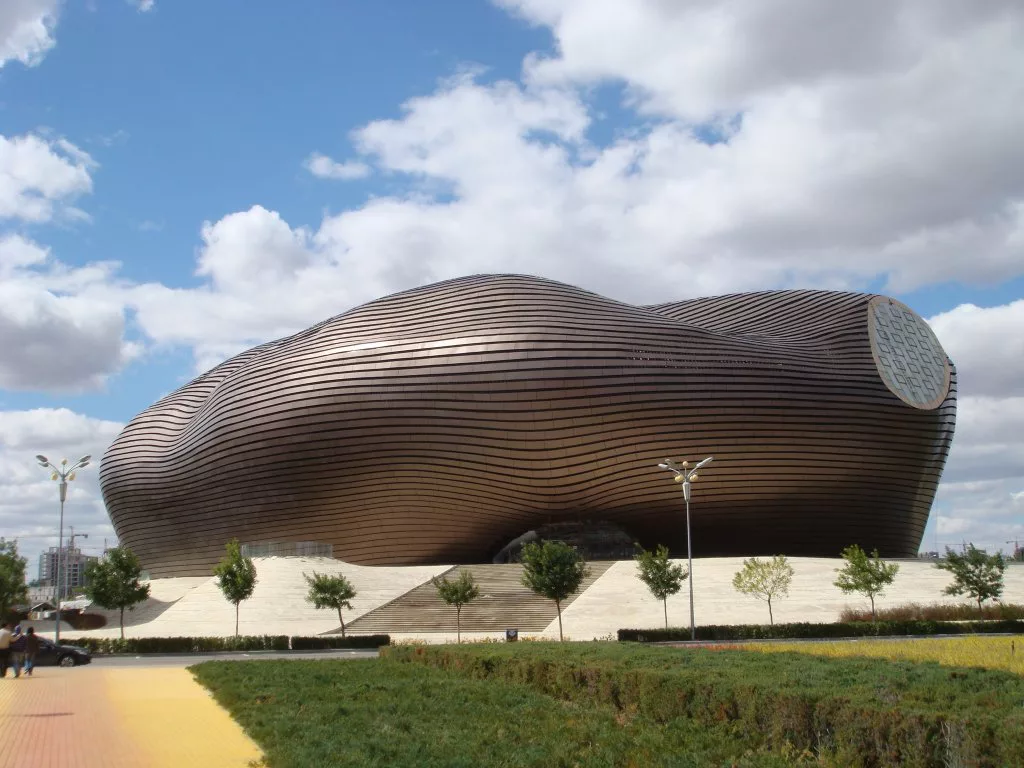
Ordos Museum, China, by MAD Architects, 2011
Located in the city of Ordos in the Gobi Desert, the museum was constructed to bring in more visitors to the newly built city that could cater to the needs of 1 million citizens.
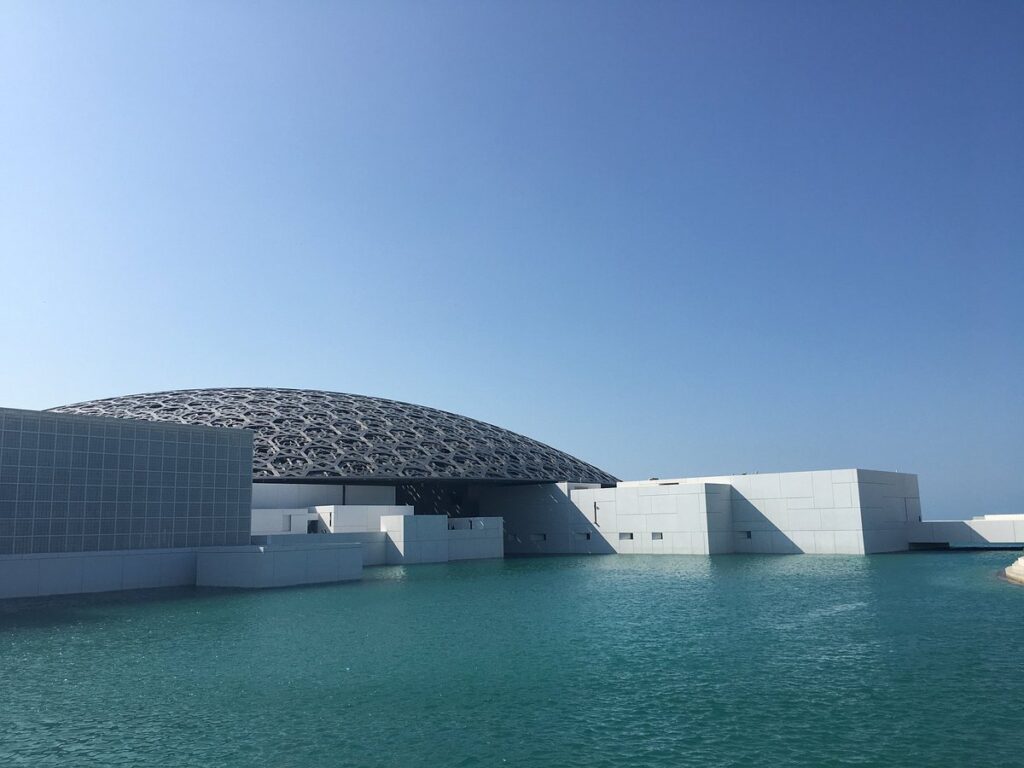
Louvre Museum, Abu Dhabi designed by Jean Nouvel, 2017
Built with an agreement between the governments of UAE & France, the Louvre brought in 2 million visitors in the first two years of its opening. Leveraging the existing tourists from the ever-growing Dubai, located only 2 hours away by road.
Conclusion
In the end, the Bilbao Effect will continue to strive as an excellent example of how architecture and design can leave positive impacts on the economy and culture of a city. The opening of the Guggenheim Museum in 1997 has brought a sense of pride, increased tourism, and contributed to the economic growth of Bilbao. While not every endeavour may replicate the same level of impact, it is evident that effective design plays a crucial role in rejuvenating urban areas by creating buildings that are both aesthetically pleasing and functional, ultimately enhancing their appeal and vitality.
Bibliography
- Farook, Adnaan. “The Bilbao Effect : How the Design of a Museum Transformed the Economy of the City.” Www.snaptrude.com, 4 Aug. 2022, www.snaptrude.com/blog/the-bilbao-effect-how-the-design-of-a-museum-transformed-the-economy-of-the-city
- Griffiths, Alyn. “Frank Gehry’s Guggenheim Museum Bilbao Is ‘the Greatest Building of Our Time.’” Dezeen, 18 May 2022, www.dezeen.com/2022/05/18/frank-gehry-guggenheim-museum-bilbao-deconstructivism/
- Guggenheim Museum Bilbao. “The Construction of the Building | Guggenheim Museum Bilbao.” Guggenheim Bilbao, 2019, www.guggenheim-bilbao.eus/en/the-building/the-construction
- Joseph, Melva. “The Bilbao Effect- Impact of Frank Gehry’s Guggenheim – Rethinking the Future.” RTF | Rethinking the Future, 19 May 2020, www.re-thinkingthefuture.com/2020/05/19/a862-the-bilbao-effect-impact-of-frank-gehrys-guggenheim/
- Rowan Moore. “The Bilbao Effect: How Frank Gehry’s Guggenheim Started a Global Craze.” The Guardian, The Guardian, 21 Mar. 2018, www.theguardian.com/artanddesign/2017/oct/01/bilbao-effect-frank-gehry-guggenheim-global-craze
- “The Guggenheim Museums and Foundation.” The Guggenheim Museums and Foundation, www.guggenheim.org/teaching-materials/the-architecture-of-the-solomon-r-guggenheim-museum



